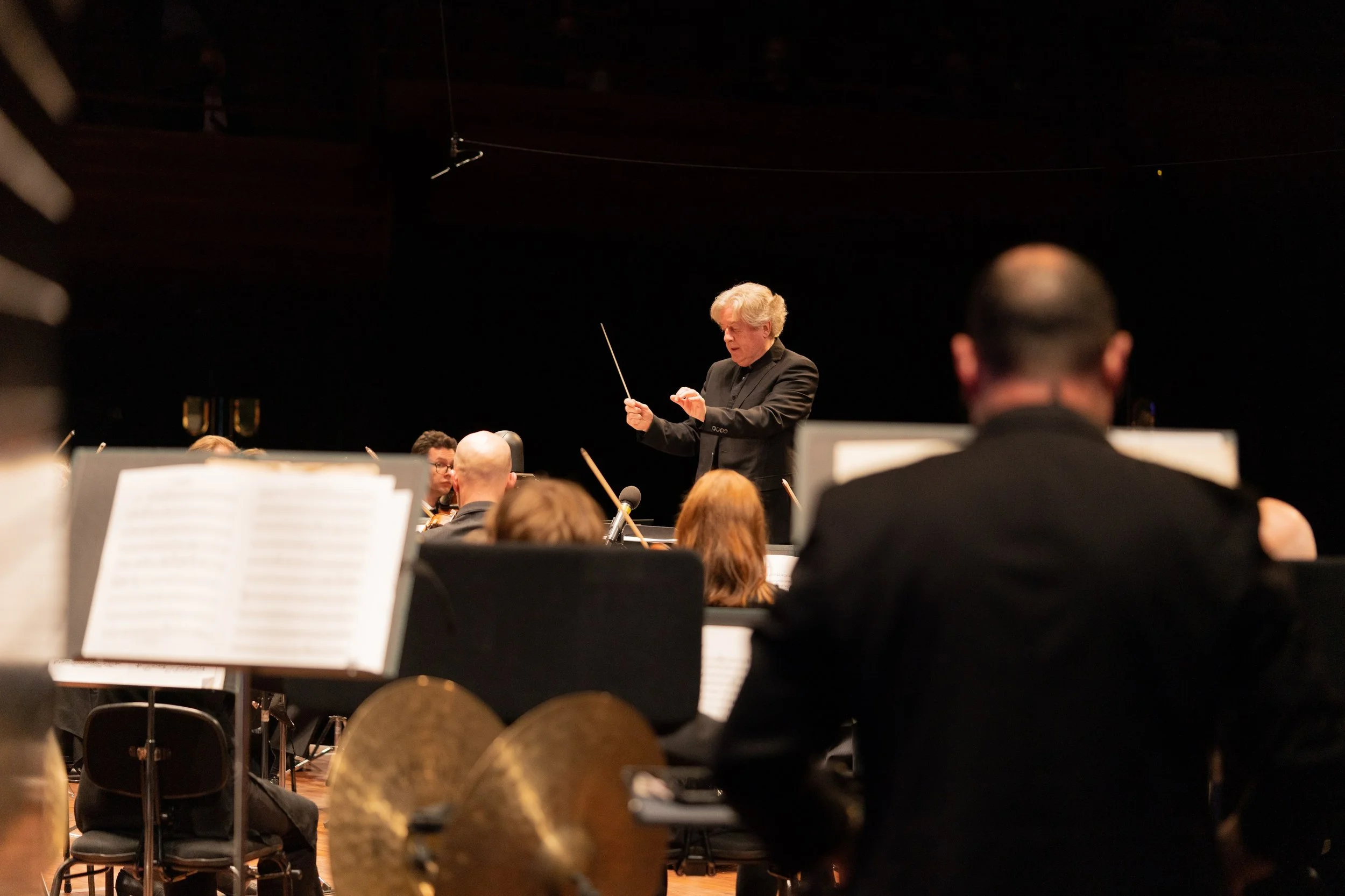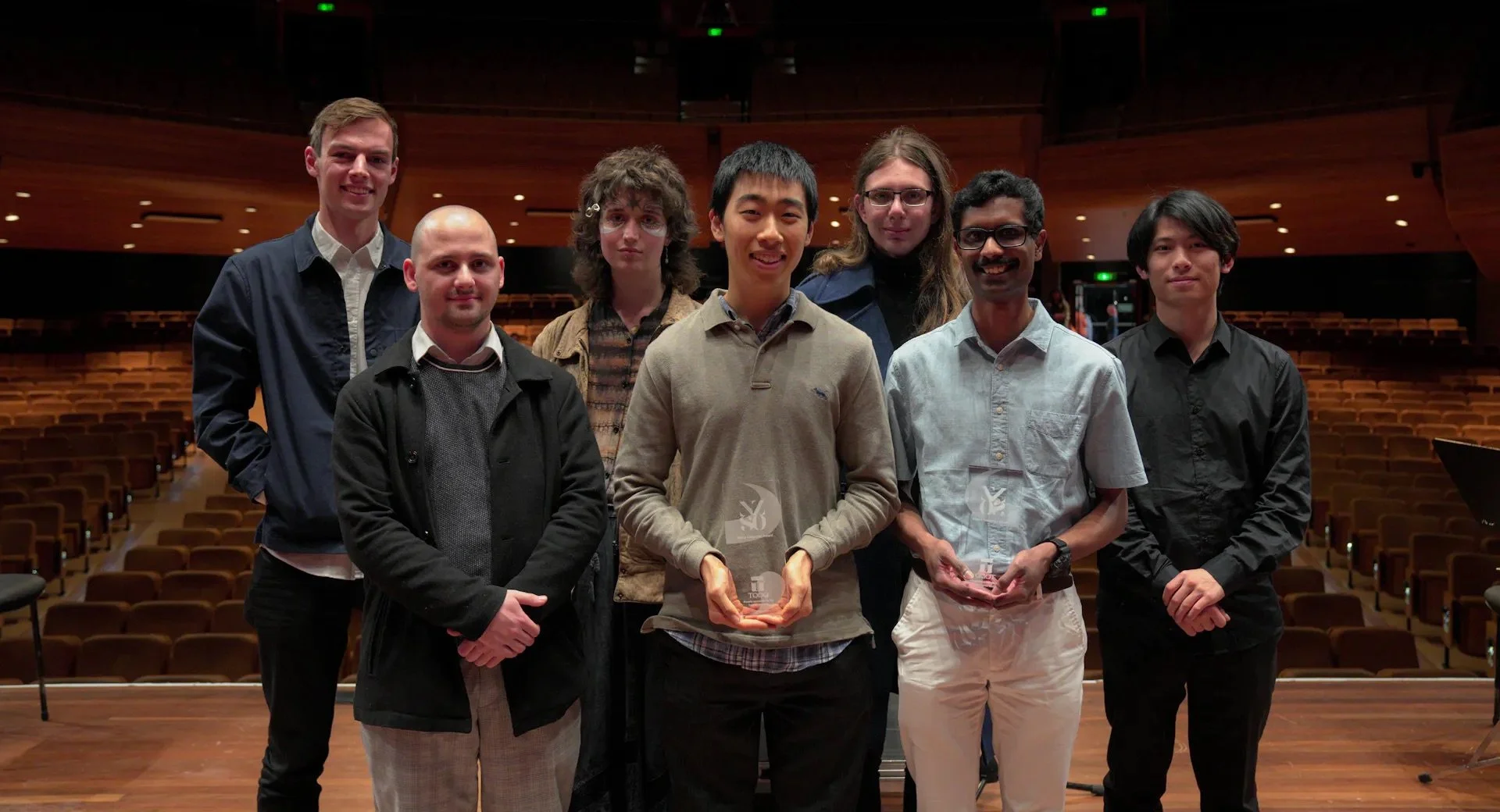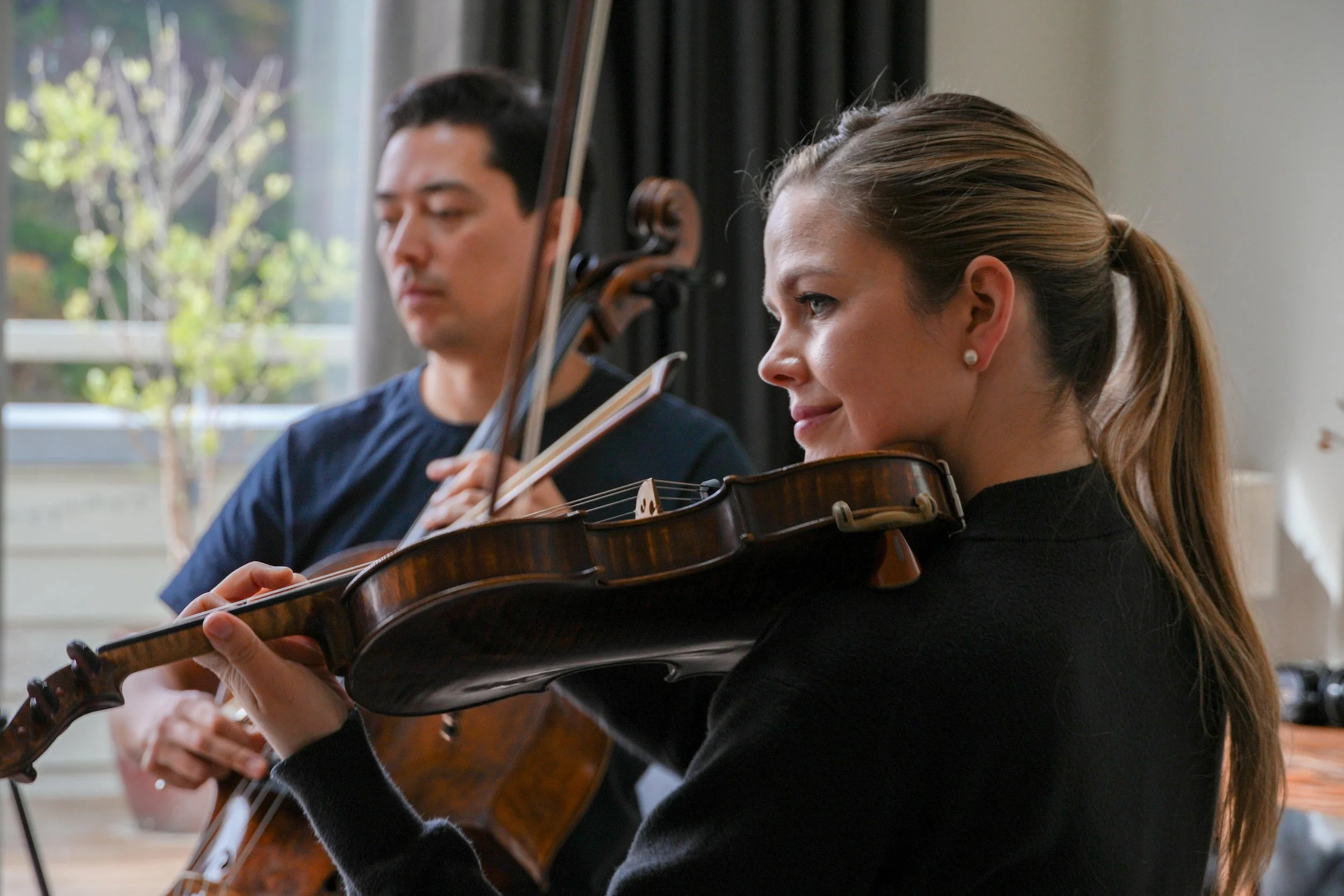NZSO: large and small ensembles on the road
The NZSO is on tour with conductor James Judd
Image credit: Latitude Creative/NZSO
The NZSO is on the road this month, taking two programmes, ‘Reflections’ and ‘Jubilation’, around the country in their 2024 Setting Up Camp initiative. As Aotearoa's national orchestra, the NZSO has in recent years taken itself, or parts of itself, around the country to smaller cities and towns, offering daytime and evening concerts and other community events to reach as many New Zealanders as possible.
Jubilation
The tour began at home base with ‘Jubilation’ in Wellington. The capital is, of course, well-served for NZSO concerts, which may account for the sadly small audience in the Michael Fowler Centre for the opening concert of the tour. It was held on a Thursday night on a day that had contained, among other things, the huge protests of a Treaty-focused hikoi around the motu, the coalition government's first Budget, a vote on the structure of NZ Rugby and a strike by young doctors.
The programme includes two very short works by emerging Kiwi composers from the NZSO’s Todd Young Composer Awards. Henry Meng’s Fanfare requires full symphonic forces, and has a wealth of material packed into a lively and forthright piece a mere two minutes long. The influence of the Stravinsky of The Rite is there in effective rhythmic layering that gives way to a lovely oboe melody. Meng, a Todd finalist with Fanfare in 2022 and also a prize-winning pianist, revealed here enough musical ideas for a longer work. Look out for his Apparitions of the Crepuscule, a more expansive six minutes that won him the Todd Prize in 2023.
NZSO Todd Young Composer Awards 2023 finalists with winners Henry Meng (centre) and Sai Natarajan (2nd from right).
Works by both winners are featured in the NZSO Jubilation concert currently on tour.
Sai Natarajan’s We Long for an Adventure, also a 2022 Todd finalist, revealed his impressive sense of the symphony orchestra as an instrument. He made extensive use of his thematic material, tossing Gershwin-like jazzy melodies around the instruments, and varying the mood with a light touch. Natarajan is a composer of game and film music, and the audience responded warmly to his short, buoyant and appealingly quirky piece. Last year his Stargazer won him the Orchestra’s Choice Award in the Todd competition.
The longest work on the Jubilation programme was a rather curious programming choice. Strauss's Le Bourgeois Gentilhomme, a neo-Baroque suite of dances inspired by the music of Lully, has a sprightly quaint charm but insufficient substance - or relevance - to stimulate either orchestra or audience. Written for chamber-sized orchestra with piano and harp, NZSO’s A-team of outstanding soloists rescued the performance from banality with exquisite playing.
As expected, the stand-out music - and performance - were delivered by Shostakovich’s Symphony No 9 in E flat Major, Opus 70. Stalin’s regime expected a grand celebration of Russia victory over Nazism in 1945. Instead, Shostakovich created this short, mocking neo-classical symphony, just 22 minutes long and filled, in spite of superficial good cheer, with his ironic wit within a complex emotional landscape.
From the jaunty opening Allegro we’re aware of something in disguise, music with a dark edge and uncouth interruptions from brash trombone with snare drum. Mocking pomposity with false cheer, Shostakovich uses timbres like chirping piccolo to poke out his tongue at the regime.
The second movement is a marvellous example of Shostakovich’s creation of drama with chromaticism. Asymmetrical rhythms, too, keep us off kilter, and conductor James Judd manages his forces carefully as a dissonant woodwind choir and sliding strings bring a sense of foreboding. With strings in pizzicato accompaniment, both horns and woodwinds offer gorgeous playing, right through to Bridget Douglas’s lovely flute melody that carries us to a slower ending.
The Presto third movement is a sparkling chasing game, brilliant piccolo atop winds and strings and ironic and fierce blasts from the brass. The music marches in 6/8 time, but without the pompous grandeur Stalin would certainly have preferred.
NZSO Principal bassoonist Justin Sun
“…playing of nuanced, expressive subtlety.”
Photo credit: NZSO
The funereal Largo, opening with a trombone choir, contains what Yevgeny Mravinsky, conductor of the work’s 1945 premiere, described as “genuine lyricism and profound sorrow”. Trombones and tuba alternate with an almost improvisatory solo bassoon, over sustained strings, played with nuanced, expressive subtlety by NZSO principal bassoon Justin Sun. His extended cadenza leading directly into the mocking theme of the final movement was brilliantly played, and his performance and those of other fine soloists were acknowledged by repeated ovations in the final applause.
Shostakovich had expressed his disdain for Stalin by concluding the work with biting satire and almost clown-like parodies of the themes. He almost got away with it – but the work was later denounced and eventually banned. It was not until after Stalin’s death that Shostakovich wrote another symphony.
NZSO ‘Jubilation’ with James Judd (conductor) in Wellington May 30, 2024
The programme can be heard in Blenheim (6 June), Invercargill (11 June) and Dunedin (13 June). More information here.
Reflections
Alongside NZSO’s full orchestral tour is one to five centres by a very accomplished string quartet of NZSO musicians, violinists Jessica Oddie and Yuka Eguchi, violist Alexander McFarlane and cellist Ken Ichinose.
I caught the programme in Paraparaumu at Te Raukura ki Kāpiti, a multi-purpose performing arts centre that opened in 2020, built by Kapiti College in partnership with the local District Council. This community asset has good facilities and a decent-sized auditorium, though its fairly dry acoustic is less than ideal for chamber music.
The concert began with Schubert’s Quartettsatz D 703, the first movement of a quartet that Schubert did not complete. It’s a splendid movement, in sonata form, and the musicians revelled in both the telling agitation of the first theme and the lovely lyricism of the second.
Violinist Jessica Oddie with cellist Ken Ichinose
…in rehearsal for the NZSO Reflections programme, touring to five centres
Photo credit: Phoebe Tuxford/NZSO
The interesting curation of the ‘Reflections’ programme is by the talented Oddie, who is back in New Zealand with the NZSO after many years living, studying and performing overseas, principally in America. John Dowland’s charming signature song, Flow, my Tears, a Renaissance hit originally written for lute and here arranged for string quartet, was an unusual but attractive choice, although the decision to segue directly into Caroline Shaw’s Entr’acte possibly detracted from both works.
Entr’acte was a programme highlight. New York-based Shaw, who at 30 became the youngest recipient of a Pulitzer Prize for composition, was inspired to write Entr’acte by Haydn’s String Quartet Opus 77 No 2, specifically its minuet and trio.
American composer Caroline Shaw
“…her Entr’acte is magical and entrancing.”
Shaw’s magical work quickly slides off hints of Haydn into something evanescent, viewed through a smoky mirror. We are entranced by ghostly glissandi, haunting fragments of classical phrases, a pizzicato chorale, some virtually silent bowing and floating harmonics. The ephemeral movement is, formally, a minuet and trio and, when the opening minuet returns, breathing spaces have lengthened. Eventually the three upper strings disappear up into the ether as the cellist, putting his bow aside, remains strumming thoughtfully, evoking Dowland's lute, perhaps. The piece requires great timing and ensemble playing, and this ensemble absolutely delivers in a beautifully managed performance.
After a short interval we were treated to Beethoven’s String Quartet No. 9 in C major, Opus 59, No 3, a work which really showed off the ensemble’s gifts. The third of the composer’s middle period ‘Razumovsky’ Quartets, it was written at a time when Beethoven was struggling with encroaching deafness. It has been suggested the obsessive quality of the big A minor second movement, with its fierce accents, may be expressive of his emotional state. In this movement, the transparency of the acoustic became a strength, revealing the marvellous clarity and balance of the contrapuntal exchanges between the musicians.
The final fugal movement was taken at a fearsome clip, as 'molto’ an allegro as I've heard for the movement. These musicians were up for it with a fleet and passionate performance that earned them a well-deserved ovation from the near-capacity Kāpiti audience.
Image credit: Te Raukura ki Kāpiti
NZSO ‘Reflections’ with Jessica Oddie and Yuka Eguchi (violins), Alexander McFarlane (viola) and Ken Ichinose (cello) at Te Raukura ki Kāpiti on 1 June 2024
The programme can be heard in Nelson (7 June), Dunedin (12 June) and Christchurch (14 June). More information here






